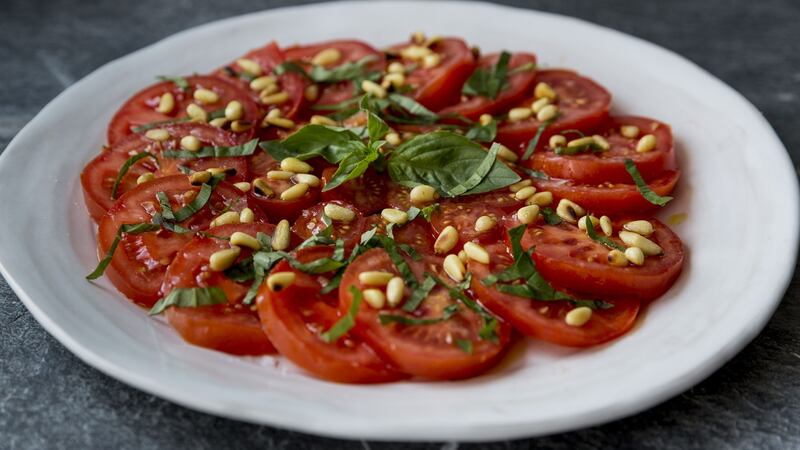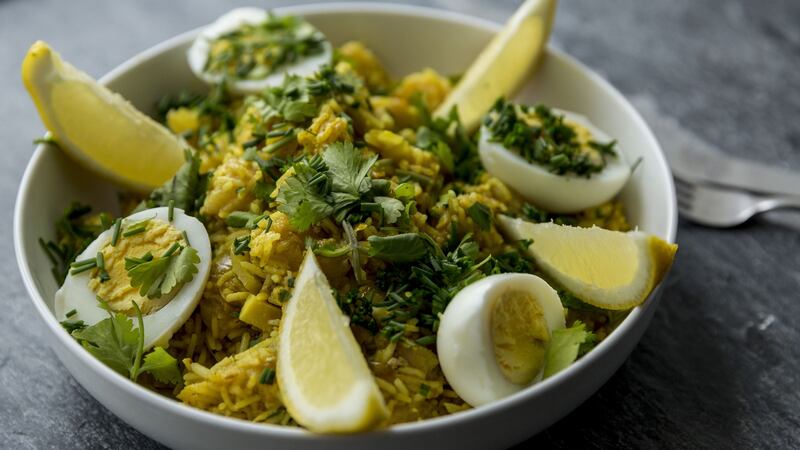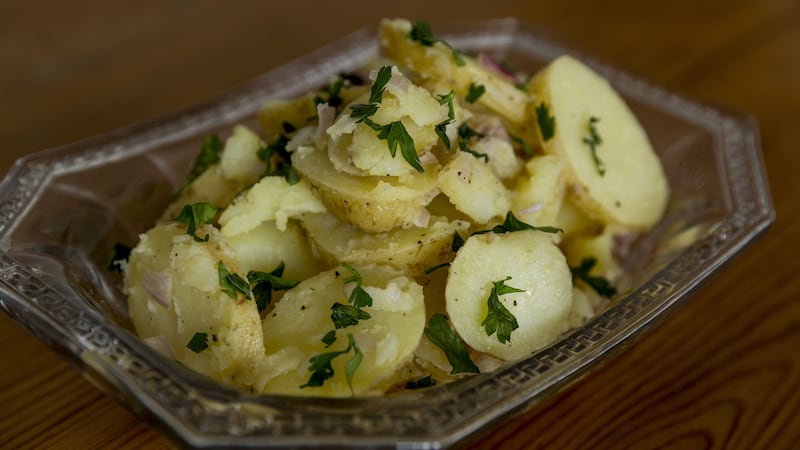It’s garden party weather – brunch, lunch and dinner party weather. Whether you decide that means drinks outside before a meal indoors or an entire meal outside matters not.
However, those of us who have thrown a self-catered party know that often it means spending more time with your pots and pans than with your guests, and you find yourself with your hands in washing up bubbles instead of sipping bubbles, as you intended.
To avoid all the to and fro and to allow you to enjoy your evening, I have a few golden rules, which are simple and to the point but effective. I have also supplied a few recipes which offer the illusion of party grader while, in fact, being incredibly simple.
Firstly, the guest list should only be of people you love to feed (be warned, this may not be the same as people you love). Secondly, the food should only be what you love to eat. Don’t push yourself to create some excessively complex dish if it’s not something you enjoy. Finally, realise that the host is an inherent part of any party. Do not let your party be the death of you. Let it be fun. Some of our greatest parties have been last minute and consisted of a couple of roast chickens, homemade bread and bowls of green salad. Ingredients during these summer months are bursting with flavour and lend themselves to the simplest of dishes.
If you are enjoying yourself, your guests typically will too.

Summer tomato salad
When tomatoes are in season, ripe and at room temperature, there is not much else we need to do to them. The salt will draw out the sweet juices and when it’s given time to mingle with grassy olive oil you have an instant dressing. Any other additions will be a bonus. When serving this salad for big numbers, seek out different sizes, colours and varieties of tomatoes. Don’t make the salad too far in advance as tomatoes can get soggy.
Serves 6
1.5kg tomatoes
Flaked sea salt
Olive oil
25g pine nuts
Basil or tarragon
Black pepper
1. Slice the tomatoes and lay on a large plate, allowing them to overlap as you go. Sprinkle with salt and allow to stand for 20 minutes.
2. In the meantime, roast the pine nuts in a dry pan and allow to cool. Roughly chop the herbs.
3. After 20 minutes, sprinkle the tomatoes with more salt and drizzle well with olive oil. Sprinkle with the toasted pine nuts and chopped herbs.
4. Finally, finish the dish off with a few grinds of black pepper and serve.
Kedgeree
Kedgeree is the ideal party food: it can be adapted in many ways, cooked in advance and enjoyed at any temperature. It’s also suitable for any time of the day. When buying smoked fish, seek out naturally smoked from a good smoke house such as Woodcock or the Burren. If smoked fish is not your thing, use regular fish and give it a few extra minutes cooking time.

Kedgeree is an ideal dish for big numbers. One can have everything prepared in advance; rice cooked, eggs boiled, onions softened, fish prepared, lemons juiced and zested, and herbs chopped. You will find the dish comes together in a matter of minutes.
Serves 6
3 eggs – hard boiled and quartered
Olive oil
2 medium onions, finely chopped
2 cloves of garlic, finely chopped
2 dried bay leaves
3 tsp curry powder or to your taste
600g undyed smoked haddock fillets skinned, pin boned and cut into bite-size pieces
3 lemons – 1 juiced and zested, and 2 quartered
600g cooked, short grain brown rice
2 good handfuls of fresh coriander roughly chopped
Salt and pepper
1. Heat the olive oil in a large frying pan or wok over a low heat and add the onion, garlic and bay leaves.
2. Allow to soften without colouring for about 5 minutes, then add the curry powder and cook for a couple of minutes more, next add the smoked haddock and cook for about 1 minute, add the juice and zest of 1 lemon.
3. Add the rice to the pan and gently heat through, then add half the coriander, and stir in gently.
4. Taste and add more lemon juice and seasoning if needed.
5. Put into a warm serving dish (or leave in the frying pan) and serve with the quartered lemon and egg arranged around the dish and sprinkle with the rest of the coriander.
Coronation chicken
In the 1980s this dish was very unfashionable and the butt of many a chef’s joke. When I saw the ingredients and the care that was taken in the making of it, I was amazed it had such a bad reputation, and felt it couldn’t be anything but delicious. And delicious it is.

There is an added bonus meal here too. After you have portioned the chicken, you can make a simple soup. Return the carcass and any bones and skin to the poaching liquid, bring it back to the boil and simmer for 40 minutes. Strain. In a blender, whizz up 2 onions, a red pepper, 6 tomatoes, 2 cloves of garlic with 500ml water, and a good pinch of salt and add it to the stock. Simmer for 40 minutes and you will have a nourishing summer soup.
Serves 6
2kg whole chicken
Water, enough to cover chicken
2 carrots
2 sticks of celery
1 onion
2 cloves garlic, crushed
1 tsp salt
1 tsp fennel seeds
1 tsp coriander seeds
2 bay leaves
For the sauce
2 tbsp olive oil
2 medium onions, chopped
6 dried apricots, pre-soaked in 250ml hot water for 30 minutes
2 tbsp curry powder
A bay leaf
Salt and pepper
3 egg yolks
Juice of ½ lemon
400ml oil
To finish
Chopped coriander, parsley, tarragon or chives
Toasted slivered almonds.
1. Place the chicken in a saucepan. Roughly chop the carrots, celery and onion and add to the chicken. Now add the garlic, salt, spices and bay leaves. Cover well with water and bring gently to the boil, turn down to a simmer and cook with a lid on for 30 minutes. Turn off the heat and allow the chicken to continue cooking in the liquid for 30 minutes.
2. In the meantime, make the sauce. Heat a medium pan and add some oil along with the chopped onions, season with salt and cook for a couple of minutes without browning.
3. Drain the apricots, keeping the soaking liquid. Roughly chop them and add to the onions along with the curry powder and the bay leaf. Cook for another couple of minutes and then add the soaking water and allow it to simmer for 5 minutes or until the liquid is fully reduced. Allow to cool.
4. When the curry mixture has cooled fully, transfer it to a liquidiser and whizz until it's smooth. Add the egg yolks along with the lemon juice and give it another whizz. Now drizzle in the oil slowly until you have used it all. Season with salt and taste. If it's tasting a little heavy, add a squeeze of lemon and give it another whisking.
5. Remove the chicken from the liquid and allow to cool. Remove the skin and portion the chicken into pieces with a sharp knife and place on a serving plate.
6. Dress with the sauce serving the extra on the side. Scatter the chopped herbs or almonds on top.
Proper potato salad
One can add many things to a potato salad, but at this time of year we can let our potatoes speak for themselves. This salad is ideal when cooking for large numbers. It’s important to remember to cook the potatoes in small batches, otherwise you risk ending up with mash.

When buying potatoes for salad, try to avoid the floury varieties as they can be difficult to manage.
1.5kg new potatoes
Salt and pepper
6 shallots
6 tbsp olive oil
3 tbsp cider vinegar
1. Slice the the potatoes and boil in well salted water until just cooked through. Check by putting a knife in the centre of the largest piece. Drain the potatoes and spread on a tray to cool slightly, and to stop them cooking in their own heat.
2. In the meantime, finely chop the shallots and make the dressing. Take a jam jar with a tight fitting lid and add in the oil and vinegar along with some salt and pepper, replace the lid and shake the jar well until the oil and vinegar are blended. Taste and adjust the seasoning if needed. Sometimes an extra dash of vinegar could be required.
3. Arrange the just warm potatoes on a serving dish allowing them to overlap as you do. Scatter over the chopped shallots and finish off by drizzling over the dressing. Allow to stand for at least 20 minutes before serving to allow the potatoes to absorb the dressing. Dressing the potatoes while still warm helps them to take on the flavour of the dressing.

















